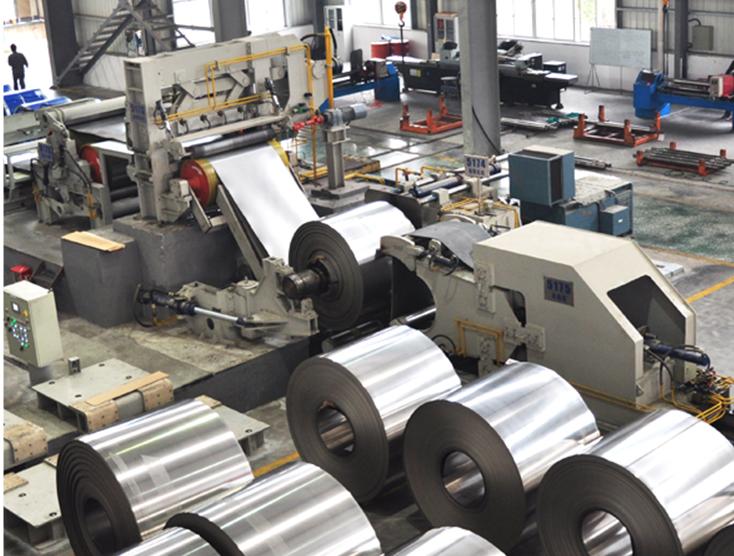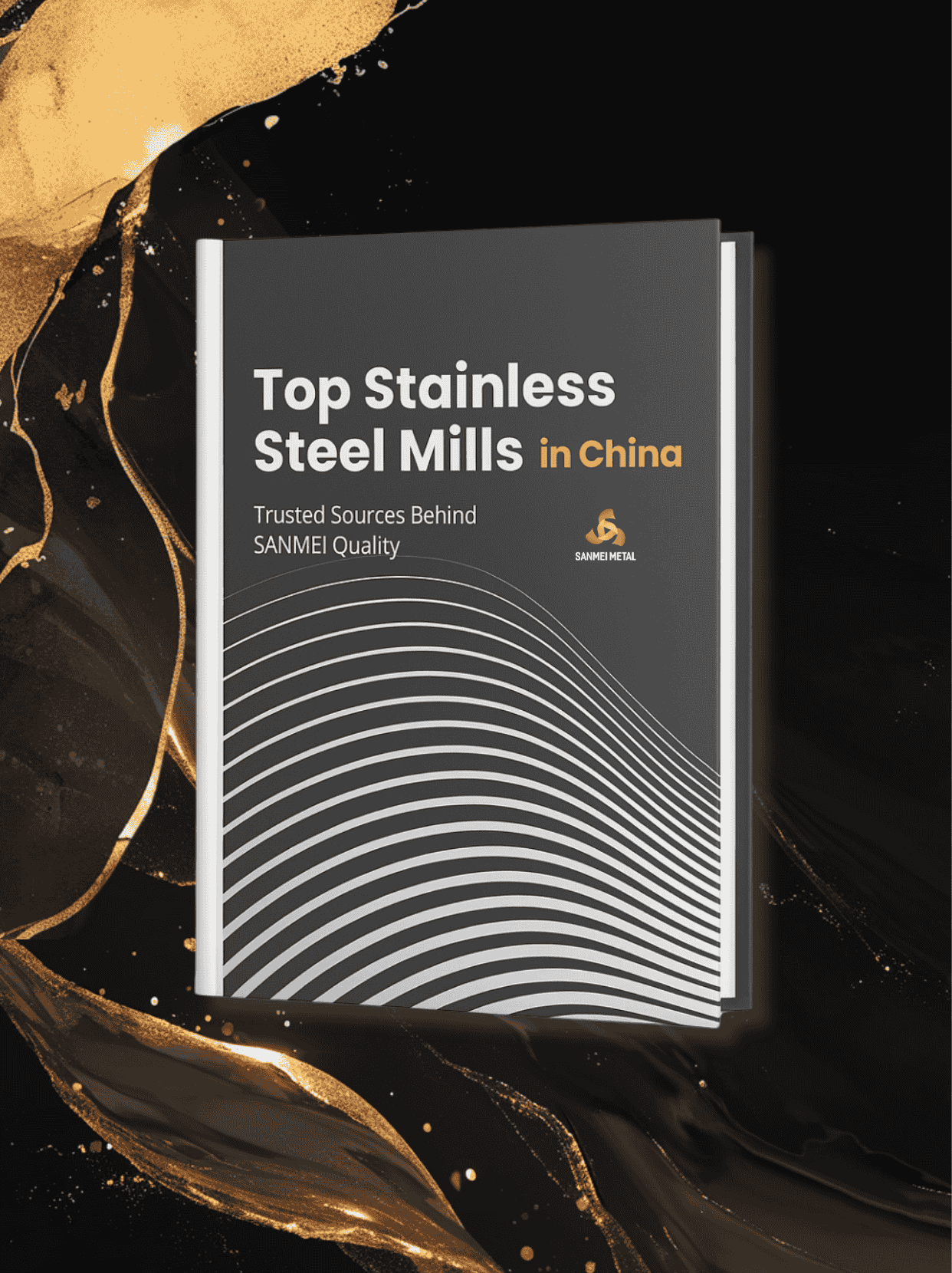Edelstahl 304 vs. 201: Was ist besser? (Neue Forschung)
Edelstahl ist für seine außergewöhnliche Korrosionsbeständigkeit und Vielseitigkeit bekannt und daher ein fester Bestandteil des täglichen Lebens und industrieller Anwendungen. Unter den vielen Edelstahlsorten sind die 201er und 304er am häufigsten anzutreffen. Sie unterscheiden sich jedoch erheblich in ihrer chemischen Zusammensetzung, Korrosionsbeständigkeit, ihren mechanischen Eigenschaften und ihren idealen Anwendungsfällen. Wir gehen auf diese Unterschiede ein und helfen Ihnen, eine fundierte Entscheidung zu treffen.
Wesentliche Unterschiede: Zusammensetzung und Leistung

Hier ist eine Tabelle mit einem Vergleich der chemischen Zusammensetzung von Edelstahl 201 und 304:
Element | Edelstahl 201 | Edelstahl 304 |
Kohlenstoff (C) | ≤ 0,15% | ≤ 0,08% |
Chrom (Cr) | 16% - 18% | 18% - 20% |
Nickel (Ni) | 1% - 2% | 8% - 10% |
Mangan (Mn) | 5.5% - 7.5% | ≤ 2% |
Silizium (Si) | ≤ 1% | ≤ 1% |
Phosphor (P) | ≤ 0,06% | ≤ 0,045% |
Schwefel (S) | ≤ 0,03% | ≤ 0,03% |
Stickstoff (N) | 0.1% - 0.25% | ≤ 0,1% |
Bei Edelstahl 201 wird ein Teil des Nickels durch einen höheren Mangananteil ersetzt, was die Produktionskosten senkt. Dieser Kompromiss schränkt jedoch die Leistung ein. Beispielsweise ist die Passivierungsschicht weniger stabil als bei 304, wodurch er in korrosiven Umgebungen anfälliger für Schäden ist.
Edelstahl 304 hingegen enthält höhere Nickel- und Chromanteile und bildet dadurch einen dichteren, stabileren Passivierungsfilm, der die Korrosionsbeständigkeit und die mechanische Leistung deutlich verbessert. Dadurch eignet sich Edelstahl 304 ideal für anspruchsvolle Anwendungen wie chemische Anlagen, Außenkonstruktionen und hochwertiges Kochgeschirr. Stellen Sie sich 304 als einen hochwertigen winddichten Regenschirm vor, der heftigen Stürmen standhält, während 201 eine kostengünstige Option für leichten Regen ist.
Korrosionsbeständigkeit: Die Umwelt ist entscheidend

Die chemische Zusammensetzung von Edelstahl bestimmt sein Verhalten in verschiedenen Umgebungen.
Studien zeigen, dass 201 Edelstahl-Exponate erhöht Spaltkorrosion Empfindlichkeit unter sauren Bedingungen, da Säuren elektrochemische Reaktionen in Spalten beschleunigen. Beispielsweise übertrifft die Korrosionsbeständigkeit von 304 in einer Lösung von 0,25 mol/l H2SO4 mit 1,01 TP3T NaCl die von 201 bei weitem.
Edelstahl 304 eignet sich dank seiner robusten Passivierungsschicht hervorragend für Umgebungen mit hoher Luftfeuchtigkeit, Säuren oder chemischen Angriffen. Daher ist er die bevorzugte Wahl für architektonische Außenverkleidungen und Chemikalienbehälter, die über längere Zeit rauen Bedingungen ausgesetzt sind.
Mechanische Leistung: Ausgewogenheit zwischen Festigkeit und Duktilität

Während Edelstahl 201 eine höhere Festigkeit aufweist, ist seine Duktilität geringer als die von 304. Diese Einschränkung macht 201 beim Biegen oder bei der Herstellung anfälliger für Risse.
Aktuelle Forschung im Jahr 2022 hebt hervor, dass Edelstahl 304 durch mechanisches Oberflächenwalzen eine graduelle Nanostruktur bilden kann. Diese Struktur erhöht die Streckgrenze bei gleichzeitig hervorragender Duktilität und erreicht so eine für Luft- und Raumfahrtanwendungen, wie beispielsweise Flugzeugkomponenten und Raketengehäuse, entscheidende Balance. Solche Innovationen unterstreichen die überlegene Vielseitigkeit von 304 in anspruchsvollen Szenarien.
Möchten Sie einen deutlicheren Vergleich sehen? Weitere Informationen finden Sie im folgenden Video.
Kosten vs. Wert: Das Budget ist wichtig

Der geringere Nickelgehalt von Edelstahl 201 senkt die Produktionskosten und macht ihn zu einer wirtschaftlichen Wahl für kurzfristige Projekte mit geringem Bedarf. Seine Haltbarkeit ist jedoch begrenzt.
304 ist zwar zunächst teurer, bietet aber eine längere Lebensdauer und geringere Wartungskosten in korrosiven Umgebungen. Bei Projekten, die hohe Haltbarkeit und Zuverlässigkeit erfordern, sorgt eine Investition in 304 für eine bessere langfristige Rendite.
Farbe und Aussehen: Eine Frage des Glanzes

Ob Sie es glauben oder nicht, der Unterschied zwischen Edelstahl 201 und 304 zeigt sich sogar in ihrem Aussehen. Da Edelstahl 304 weniger Mangan enthält, hat er eine hellere, weißere Oberfläche. Edelstahl 201 hingegen neigt aufgrund seines höheren Mangangehalts zu einer dunkleren, matteren Oberfläche.
Wenn Sie Wert auf Ästhetik legen und Wert auf eine polierte Optik legen, ist Edelstahl 304 die richtige Wahl. Wenn Ihr Projekt jedoch eher ein industrielles oder dekoratives Finish bevorzugt, ist Edelstahl 201 möglicherweise genau das Richtige.
Fazit: Passen Sie das Material Ihren Bedürfnissen an
Wählen Sie je nach Ihrer spezifischen Anwendung und Ihrem Budget zwischen Scharnieren aus Edelstahl 201 und 304. Für kostengünstige Lösungen in nicht anspruchsvollen Umgebungen ist 201 eine praktische Wahl. Für Projekte, die eine hohe Korrosionsbeständigkeit, Festigkeit und Langlebigkeit erfordern, ist 304 die bessere Option.
Unabhängig von Ihrer Auswahl können die Leistung und Lebensdauer von Edelstahl durch die richtige Wartung und Verwendung maximiert werden.
Immer noch unsicher? Kontaktieren Sie uns, und wir geben Ihnen individuelle Empfehlungen für den für Sie am besten geeigneten Edelstahl.









[…] Sie unterscheiden sich in ihrer chemischen Zusammensetzung, Korrosionsbeständigkeit, Festigkeit und Preis. Edelstahl 201 enthält mehr Mangan und weniger Nickel. Dadurch ist er günstiger, rostet aber leichter an rauen oder säurehaltigen Orten. Edelstahl 304 hat […]